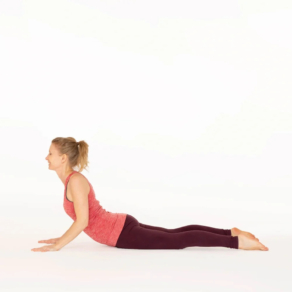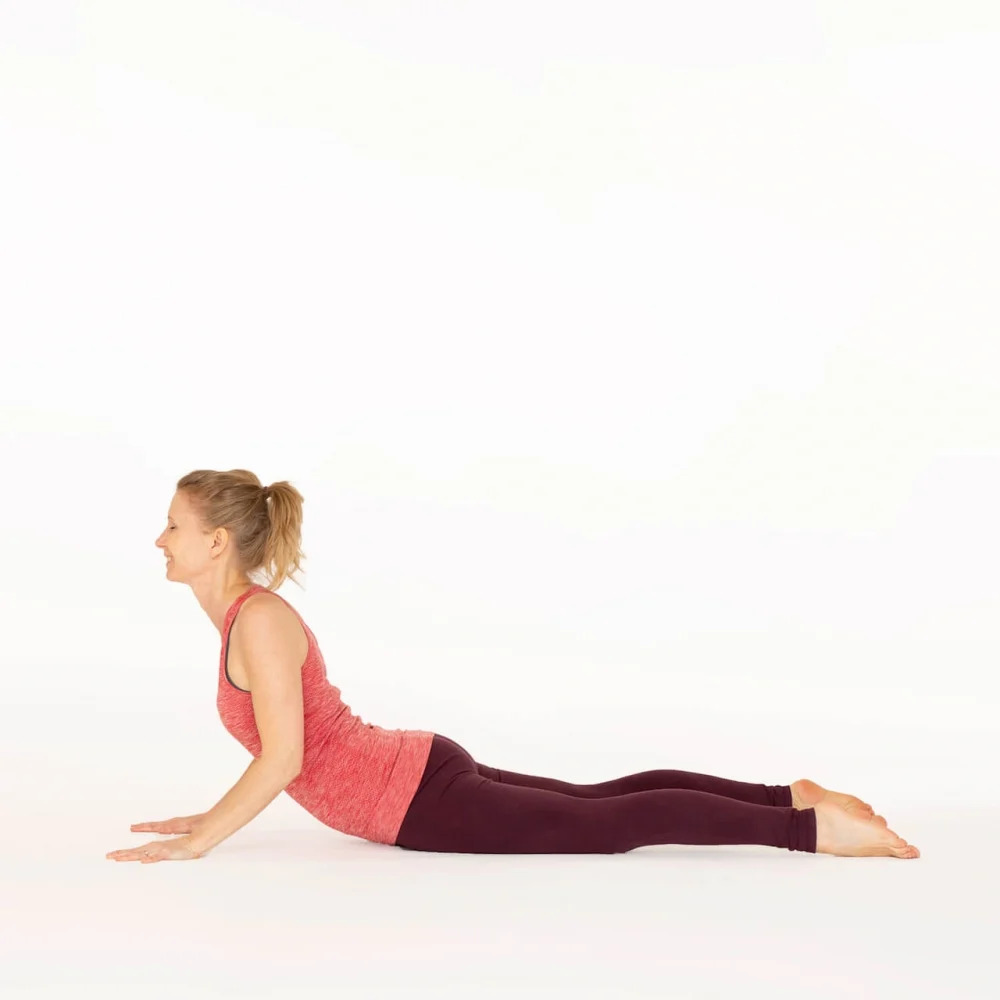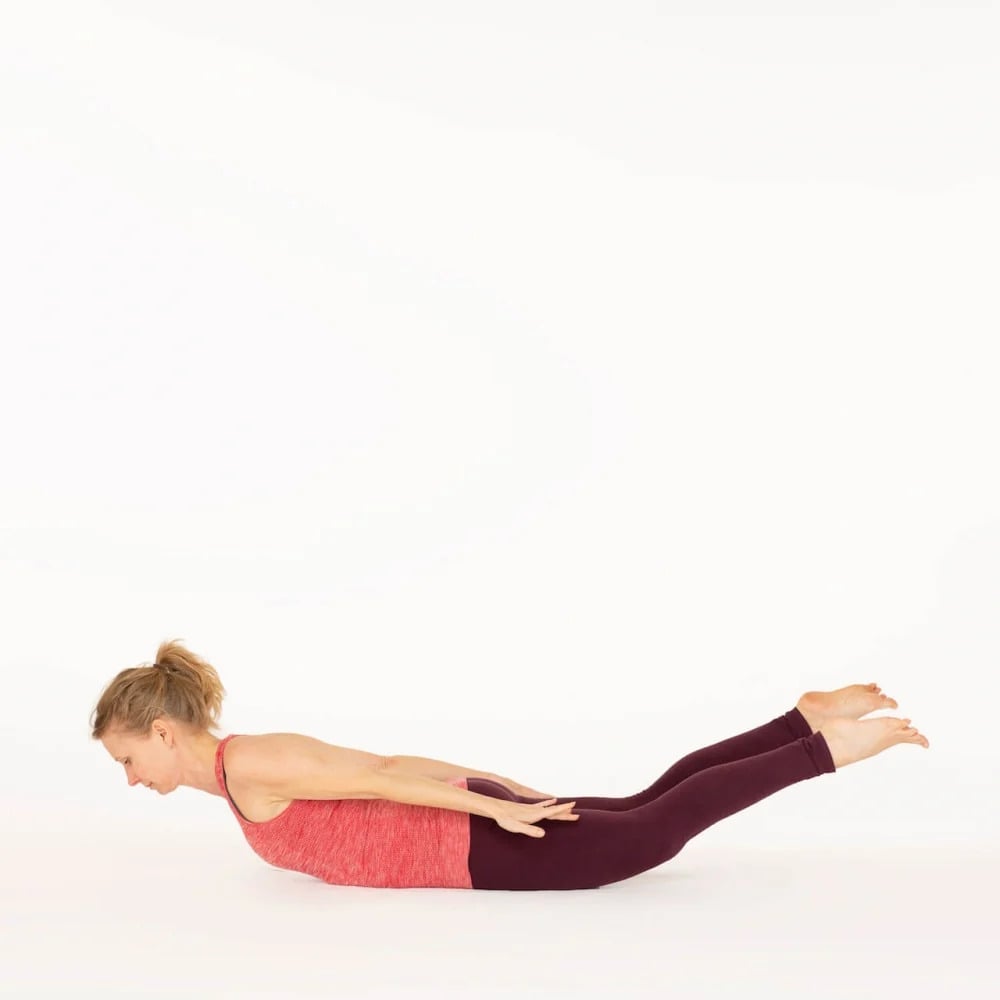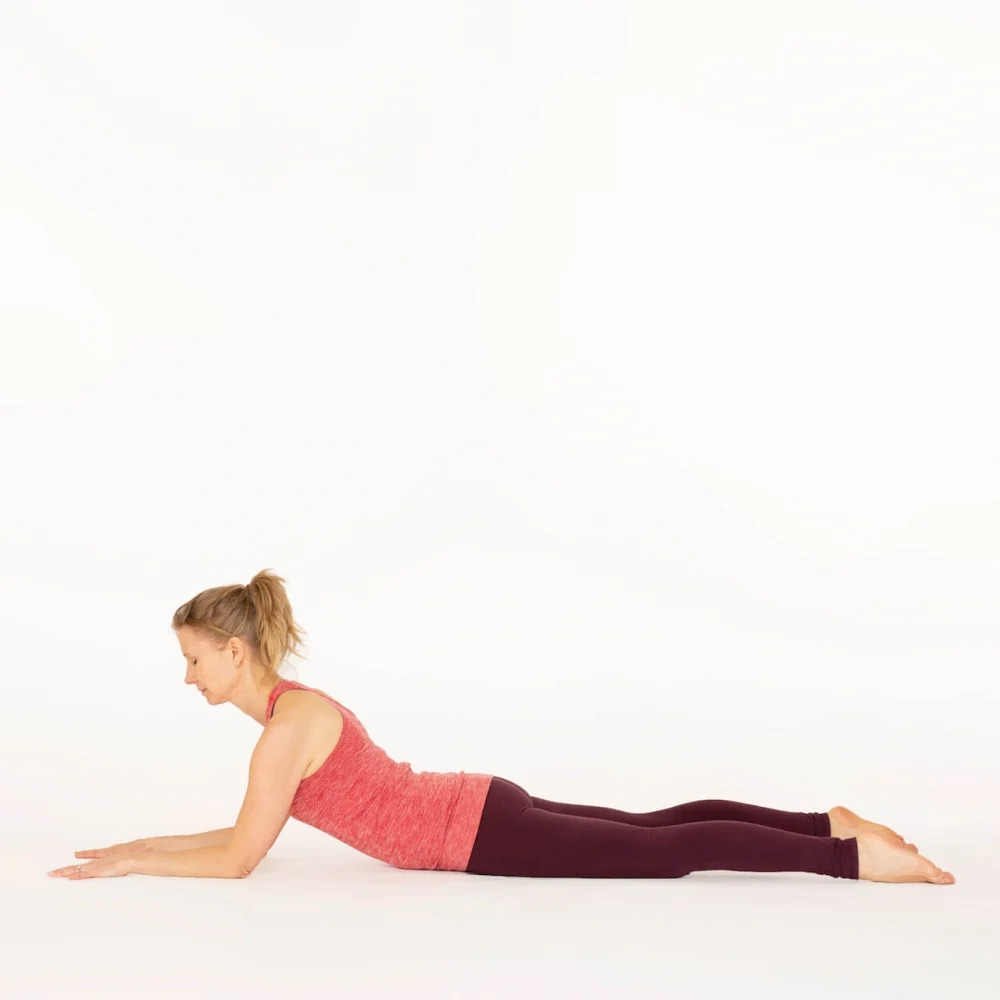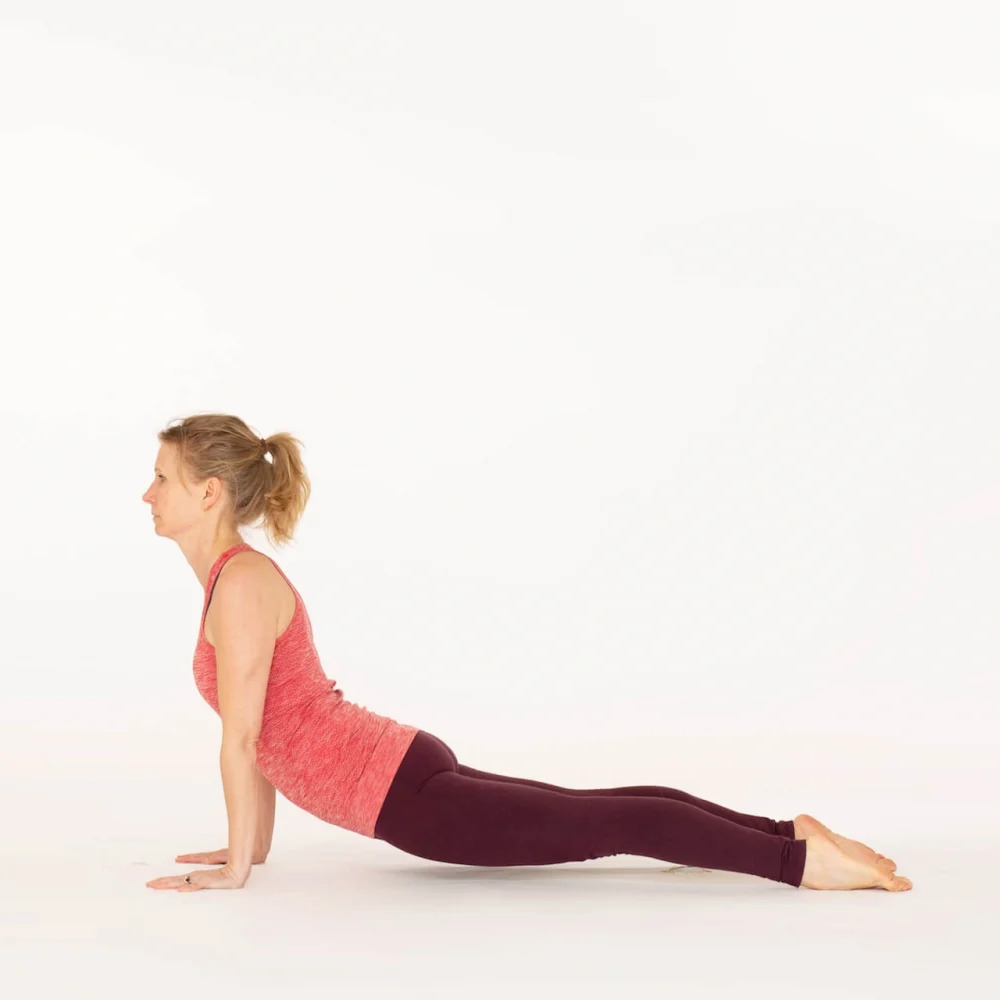Step by step
- Lie on your stomach, toes pointing straight back, hands underneath the shoulders, elbows close to the body. Legs engaged, pull the belly in and up
- As you inhale, lift your chest from the back of your heart. Roll the collarbones up and firm the shoulder blades into the upper back, slightly down along the spine
- Lift your head last. Open your heart, with no weight in the hands yet. Extend out through the toes
- Come down again as you exhale. Repeat that two times
- The third time you come up, use your hands to find your full expression of the pose. Lift your chest from the back of your heart, head follows. Come all the way up to a point where it feels good to you, still maintaining a connection from the pelvis to the legs
- Bring the side ribs forward, draw the upper arm bones back, lengthen the neck.
- Feel the backbend through the entire spine. You can look up, but only if you maintain length in the back of the neck, otherwise keep your gaze forwards so your neck is comfortable
- Stay for 5 to 10 breaths
- To come out, lower the body down on as you exhale and take a rest lying on your belly or in Child’s pose.
Beginners’ tips
- Take your time in this backbend. Only go so far as it feels comfortable. Keep your belly engaged and lower back long. Maintain the connection with your hips on the floor
- Keep your shoulders relaxed and the base of your neck soft
- Point your elbows backwards rather than out to the sides
Benefits
- Strengthens the back and legs
- Stretches the front of the body, opening the chest and shoulders
- Energizes and mobilizes the spine.
Watch out for
- If you feel a strain in your lower back, lower yourself slightly or work with Sphinx pose – with your forearms on the mat
- If you have any wrist pain try bringing your hands further in front of you or slightly pointing out to decrease the angle. Or come on to your forearms as in Sphinx pose.
Variations
- You can get a stronger backbend by walking your hands slightly closer to your torso, straightening and lengthening the arms.

